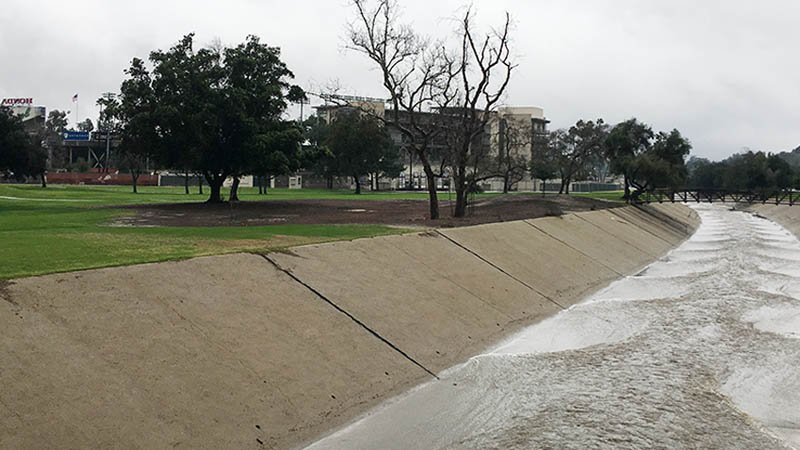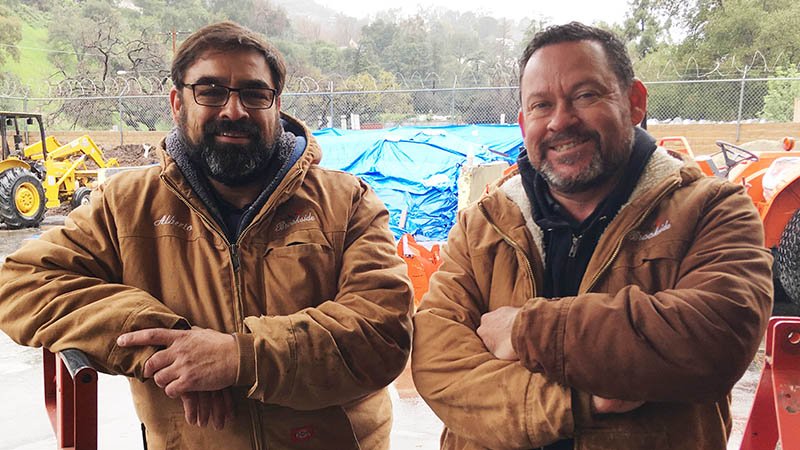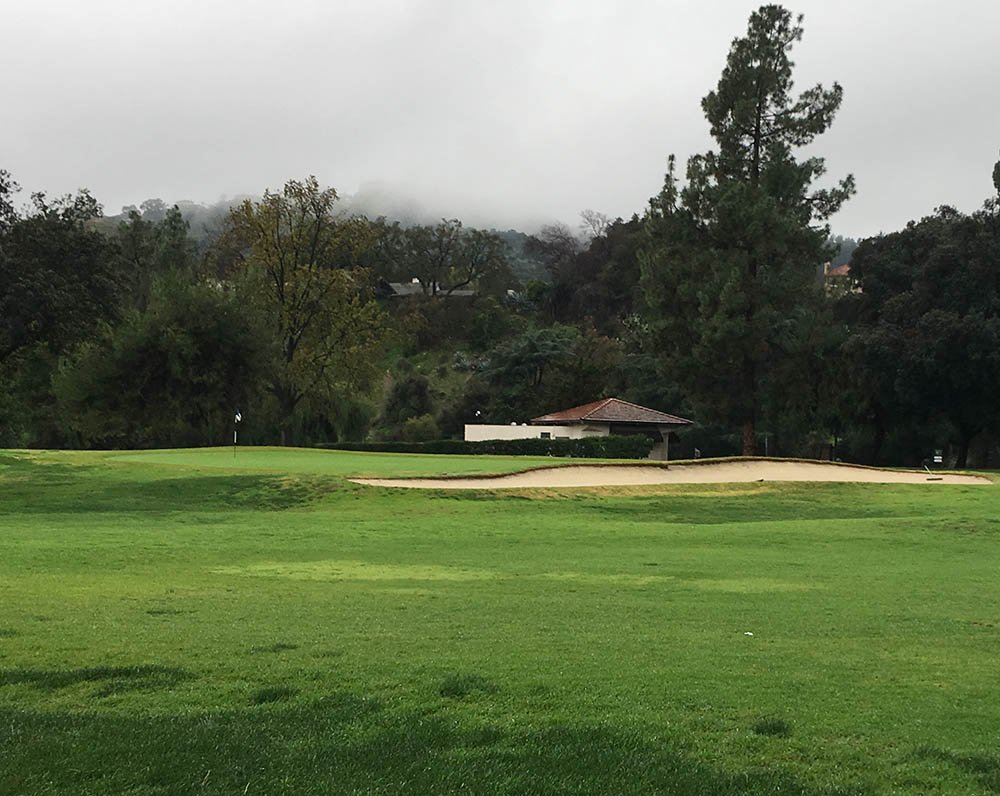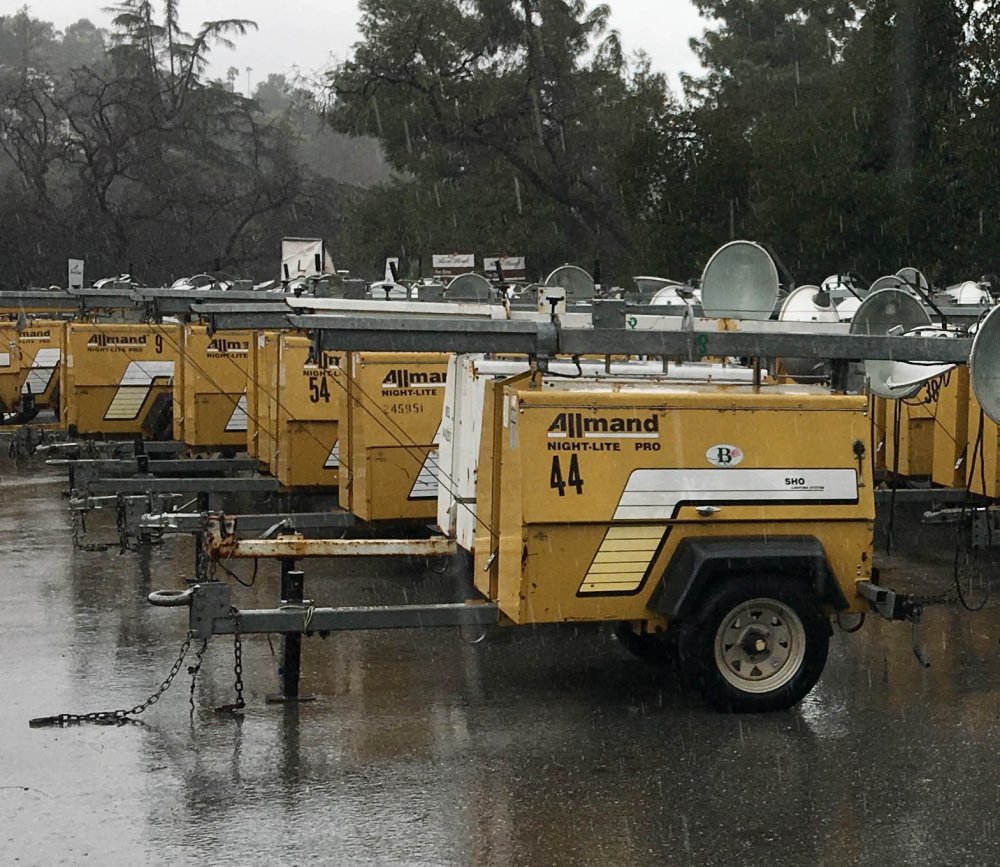
There is no such thing as an offseason at Brookside Golf Course.
Even when more than 100,000 golfers per year aren't playing this historic, 36-hole layout by architect William P. Bell, there is always something happening at the city-owned facility adjacent to the iconic Rose Bowl Stadium in Pasadena, California. Indeed, compared with other municipal golf courses, Brookside is, on one hand, an aberration in that some of the things that happen here occur nowhere else. On the other, it shares many of the same challenges other municipal and daily fee tracks face, just maybe at a slightly more intense level.
"There are a lot of challenges here," said superintendent George Winters. "It's something you have to zen with."
Designed by Bell in 1928, Brookside lies in a valley beneath Pasadena known as the Arroyo Seco that is named for the watershed that bisects the property and drains water - when there is any - from the San Gabriel Mountains to the Los Angeles River 25 miles away. Once a natural gulley that traversed along its current path, the Arroyo Seco was paved to prevent erosion in the 1930s as part of President Franklin Roosevelt's New Deal that was designed to help get unemployed Americans back to work on the heels of the Great Depression.
Today, upwards of 150,000 golfers per year trek back and forth across the Arroyo Seco to play Bell's handiwork adjacent to the historic Rose Bowl Stadium, which opened six years before the golf course in 1922.
There are a lot of challenges here. It's something you have to zen with.
The golf operation, which is managed by American Golf, has a historic past. The larger No. 1 Course was the site of the PGA Tour's former Pasadena Open from 1929 to 1938, where winners include the likes of Horton Smith and "Lighthorse" Harry Cooper. In 1968, Billy Casper won the Los Angeles Open at Brookside.
As a municipal operation, Winters has a limited budget to go along with a lot of play. Like everyone in California, he struggles with water-related issues and a full schedule of non-golf events on the Rose Bowl campus mean compaction issues. Serious compaction issues.
When asked what is the primary turf type on the golf course, assistant superintendent Alberto Munoz laughed and answered "all of them."
Winters and Munoz don't carry around a top hat, magic wand or a rabbit, but what they produce at Brookside under the circumstances they face dozens of times per year is nothing short of magic.
The stadium and golf course, both owned by the city, are important revenue sources for Pasadena. The stadium is the site of a New Year's Day bowl game, a half-dozen or so UCLA home football games and countless other events that rely on Brookside's fairways for parking, tailgate areas and more. The golf course also is the site of a two-day music festival that attracts about 50,000 concertgoers.
"We don't just run a golf course," Winters said. "We run a golf course, concert venue, parking lot and festival area all on the same property."

The city even markets the 16th and 17th holes of the No. 1 Course as The Greens at the Rose Bowl for the purpose of selling events.
Several new events on the schedule for 2019 will mean even more challenges ahead for Winters, Munoz and their team.
 "There will be 28 Fridays this year where those two holes are closed. It's going to be interesting to see how that goes," Winters said. "That is in addition to the 40 to 50 other disruptions here. We're at almost 100 days of disruption on the campus. The wear and tear is not a big deal. It's about generating revenue."
"There will be 28 Fridays this year where those two holes are closed. It's going to be interesting to see how that goes," Winters said. "That is in addition to the 40 to 50 other disruptions here. We're at almost 100 days of disruption on the campus. The wear and tear is not a big deal. It's about generating revenue."
A former superintendent at Robinson Ranch - now known as Sand Canyon - in Santa Clarita, Munoz joined Winters' staff last October because he wanted to be part of something special.
"What attracted me was all the things the happen here. The diversity of things, the golf, events, concerts, charity walks and runs," Munoz said. "There are all kinds of different things happening here, but you really don't have any idea what it's like until you actually get here. They tell you about all the events, the concerts and the parking, but until you get here and see the tailgating and the parking you, nothing prepares you for it. There are always so many people and so many things going on. So much of the golf course is taken up by some of these events, it becomes like a whole other world. It's not even like it's a golf course anymore."
When asked what is the primary turf type on the golf course, assistant superintendent Alberto Munoz laughed and answered 'all of them.'
It took Winters about a year to zero in on the process of preparing the course for non-golf events that include removing items like ball washers, tee markers and flagsticks, staking off greens and bunkers and installing diesel-powered temporary lighting (pictured below).
"You're so immersed in the event, you're not even thinking of this as a golf course anymore. It's a property where you're trying to manage all these things around you," Winters said.
"For a UCLA game, we will have staff on site for almost 48 hours straight. It's not a normal golf course where we come in at 5 in the morning and leave at 1 in the afternoon. We are very good at preparing this to be a parking lot. It's like second nature to us. We are very organized and we have it down to a science. An outsider just can't understand when they see all these cars and tens of thousands of people here, then about nine or 10 hours after the last car is gone, it's a golf course again. There's no trash, greens are mowed and the bunkers raked. And we don't do it just once. We do it dozens of times a year. It's pretty neat to see."
Of course that schedule does result in a great deal of compaction and ground under repair. Winters aerifies fairways eight or nine times a year and goes through a lot of city water to alleviate compaction and repair damaged areas.
 About a decade ago, Pasadena had reached a deal with nearby Glendale to bring reclaimed water to the Arroyo Seco area. Most of the infrastructure was in place when residents in the surrounding area squashed the plan because they didn't want purple pipe coming through their neighborhood.
About a decade ago, Pasadena had reached a deal with nearby Glendale to bring reclaimed water to the Arroyo Seco area. Most of the infrastructure was in place when residents in the surrounding area squashed the plan because they didn't want purple pipe coming through their neighborhood.
"We're all potable water," Winters said. "There is no other source on the horizon."
Before the days of water-use restrictions, Brookside used about 750 acre feet of water per year. Today, that number is about 500 acre feet.
"Or less," Winters said.
That makes it a struggle to provide the kind of conditions golfers want when they play Brookside.
"If we were just golf with no other events, we would probably be OK with that," Winters said. "Disruption to irrigation, when we have to turn it off for two or three days when it's hot, that is our biggest challenge. We figured there are at least 250,000 people in any event season going through the golf course to the stadium. That is an astounding number in golf course terms. Once we get into these events where we have to recover, repair and grow-in, it's not possible in my opinion.
"We have 40-ton semis, many, many semis, coming onto the golf course many times a year. Some of the damage doesn't show right away, so when it does people sometimes wonder whether we are doing everything we are supposed to be doing. We have dozens of areas like this all over the place and that slowly chips away at the golf course."
The daily challenge for Winters and Munoz is to chip back and do what they can to produce the best conditions to keep more than 100,000 coming back year after year, and keeping the spirit of William Bell alive in one of the game's most unparalleled environments.
"It's very cool to be part of this - the uniqueness of the property," Winters said. "There's always something fresh. We have our frustrations, but what job doesn't?"

